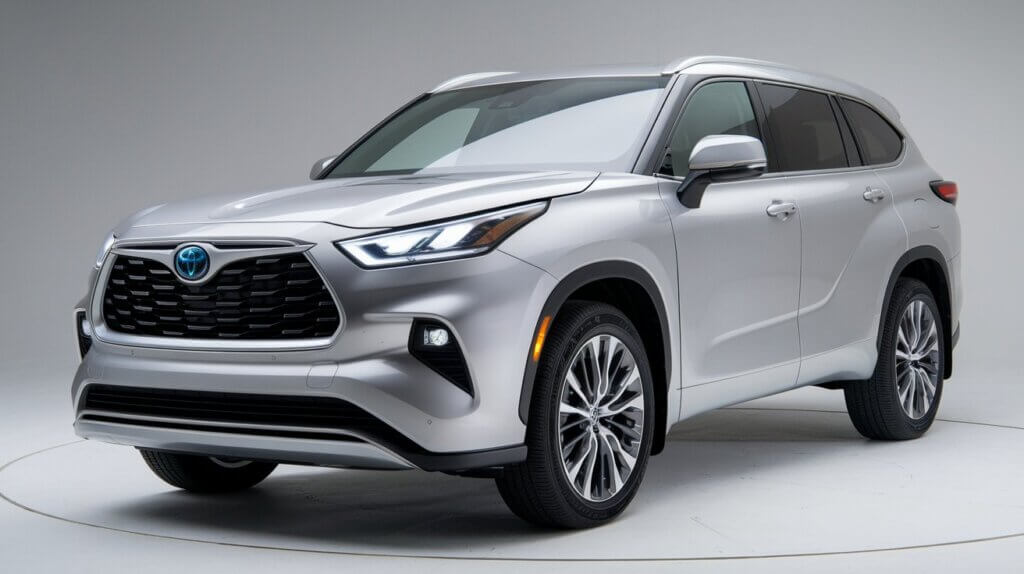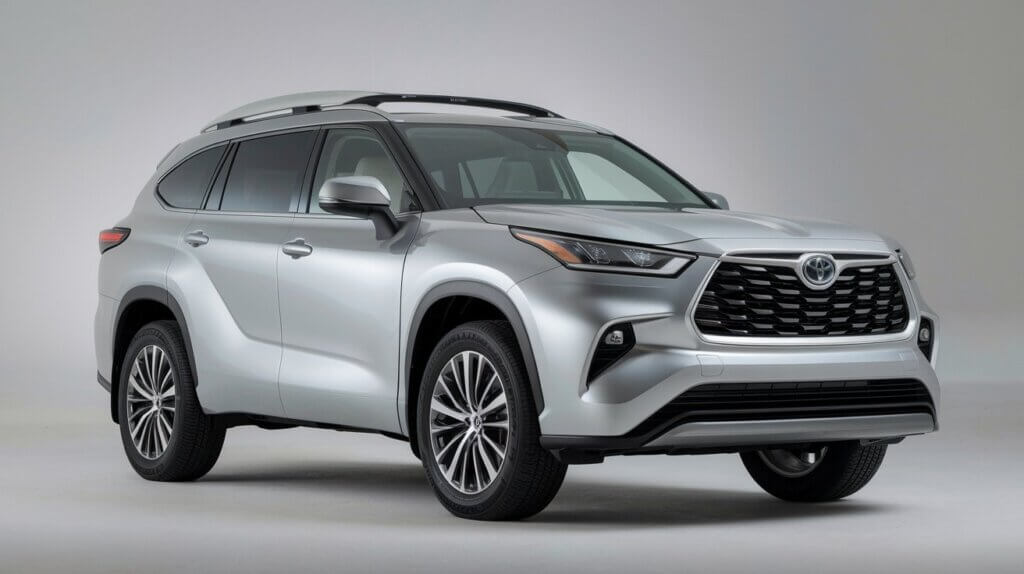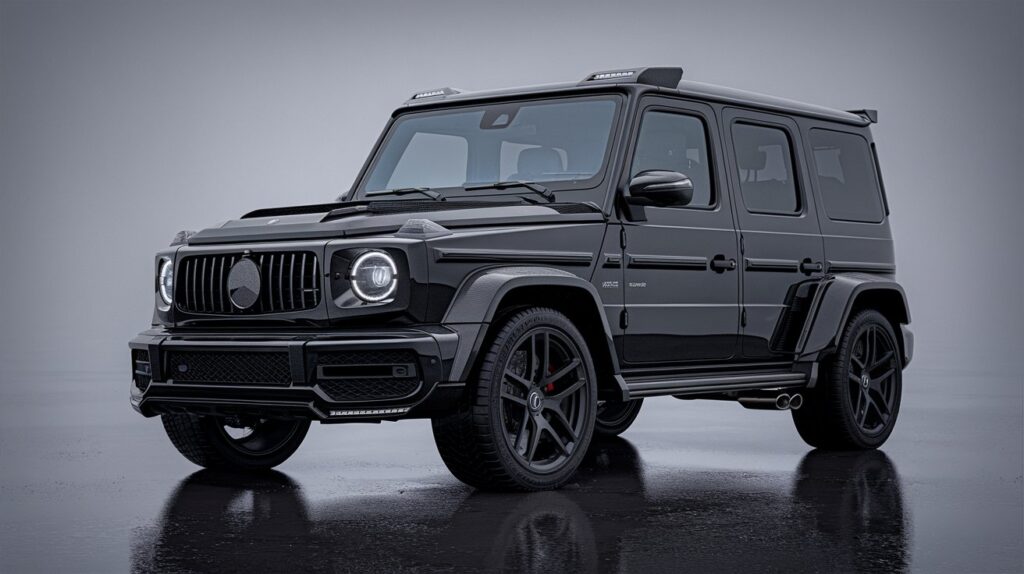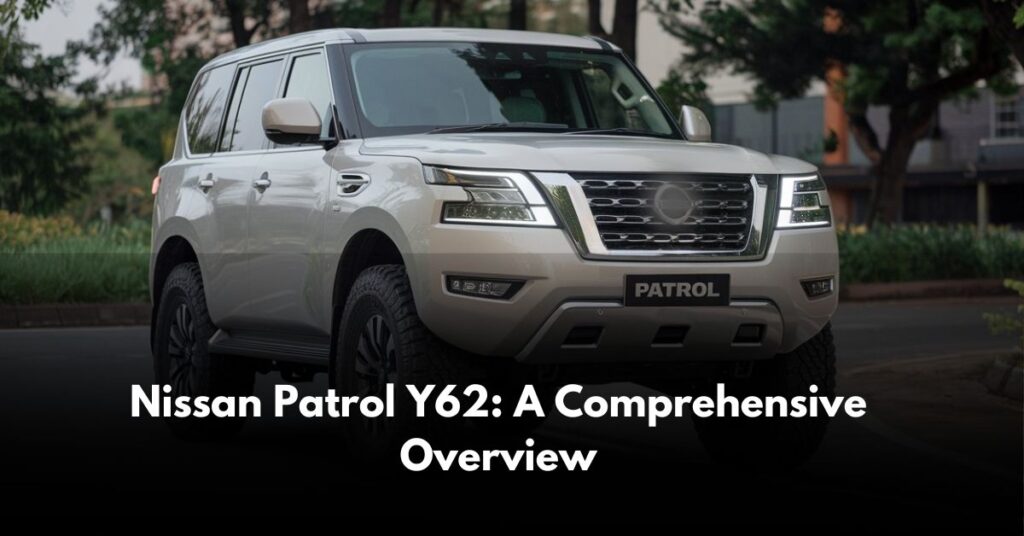A Trusted Name Facing a Crowded Segment
The Toyota Highlander has long been one of the most popular midsize SUVs in North America, praised for its reliability, comfort, and strong resale value. In 2025, Toyota continues its winning formula with a refined Highlander lineup, although it’s not an all-new generation. Instead, the 2025 model builds on the updates introduced in 2023 and 2024, making this more of a strategic refresh than a radical redesign.
But with more competition than ever—from hybrids like the Kia Sorento and Ford Explorer Hybrid to electric crossovers like the Hyundai Ioniq 7—the question becomes: Is the 2025 Toyota Highlander still worth it? Let’s take a closer look at the specs, trims, fuel economy, performance, and features that determine whether this SUV remains a compelling buy in a rapidly evolving market.
Table of Contents
What’s New for the 2025 Toyota Highlander?
As of May 2025, Toyota has confirmed via its official site that the Highlander continues with only modest updates for this model year. The 2025 Highlander builds on the fourth generation (launched in 2020), offering small refinements rather than sweeping changes.
Most notably, it continues with the 2.4L turbocharged inline-4 engine introduced in 2023 and the efficient hybrid powertrain, along with improved software in its infotainment system and subtle aesthetic upgrades across higher trims. There’s no new body design or major drivetrain overhaul, but Toyota is maintaining competitiveness through tech, safety features, and trim differentiation.
Powertrain and Performance: Balanced Over Brute Force
Buyers can choose from two powertrains with the 2025 Highlander:
- 2.4L Turbocharged Inline-4 (Gas)
- 265 horsepower and 310 lb-ft of torque
- 0–100 km/h: Approx. 7.2 seconds
- Top Speed: Around 185–193 km/h (115–120 mph)
- 2.5L Hybrid Powertrain (Gas + Electric)
- Combined output: 243 horsepower
- 0–100 km/h: Around 8.4 seconds
- Top Speed: Approximately 180 km/h (112 mph)
The gas engine delivers robust torque and confident acceleration with an 8-speed automatic transmission, ideal for towing up to 5,000 lbs. The hybrid system, on the other hand, leans toward fuel efficiency with an eCVT transmission and standard regenerative braking. It’s not a sports SUV, but it’s quick enough for daily driving and long trips, especially in urban settings where smoothness and economy matter more than raw speed.
Both powertrains offer available AWD, with dynamic torque vectoring on higher trims. This flexibility gives buyers solid all-season performance without compromising comfort.
Fuel Economy: The Highlander Hybrid’s Real Value
The 2025 Highlander Hybrid continues to stand out for its class-leading fuel economy. According to the EPA, front-wheel-drive hybrid trims deliver up to 36 mpg city / 35 mpg highway / 36 mpg combined. AWD variants still manage a strong 35 mpg combined, making the Highlander Hybrid one of the most efficient three-row SUVs on the market.
The gas-only Highlander, powered by the turbocharged engine, delivers 22 mpg city / 29 mpg highway / 25 mpg combined in FWD, with AWD models dipping slightly. While not groundbreaking, these figures are decent for a non-hybrid midsize SUV.
For buyers covering long distances or living in areas with high gas prices, the hybrid model offers significant long-term savings and environmental benefits.

Trims and Pricing: Something for Every Family
The 2025 Highlander lineup includes six trims, offering both gas and hybrid options:
- L (Gas only)
- LE (Gas or Hybrid)
- XLE (Gas or Hybrid)
- XSE (Gas only)
- Limited (Gas or Hybrid)
- Platinum (Gas or Hybrid)
Base pricing starts at around $39,000 for the gas-only L trim and climbs to just over $52,000 for a fully equipped Platinum Hybrid AWD. On average, the hybrid models cost $1,400–$1,600 more than their gas equivalents—but that premium is quickly offset by improved fuel economy and potential tax incentives in some regions.
Higher trims include more comfort features like ventilated front seats, panoramic sunroof, upgraded JBL sound systems, and larger 12.3-inch infotainment displays.
Interior, Tech, and Practicality: Designed for Families
The 2025 Highlander interior strikes a balance between upscale feel and family-oriented functionality. It seats seven or eight passengers, depending on whether you opt for a second-row bench or captain’s chairs.
Material quality improves dramatically in the Limited and Platinum trims, with features like soft leather, faux-wood accents, ambient lighting, and ventilated seating. All models come equipped with wireless Apple CarPlay and Android Auto, five USB ports, and a responsive infotainment system.
The base 8-inch touchscreen is adequate, but the available 12.3-inch display on upper trims adds visual clarity and ease of use. A digital gauge cluster and optional head-up display enhance the premium experience.
Cargo capacity is solid for the segment:
- 16 cu ft behind the third row
- 48.4 cu ft behind the second row
- 84.3 cu ft with all rear seats folded flat
That’s more than enough for family gear, shopping trips, or long vacation hauls.
Safety and Driver Assistance: A Top Priority
Every 2025 Highlander is equipped with Toyota Safety Sense 2.5+, a comprehensive suite of driver assistance tech. Features include:
- Pre-collision system with pedestrian detection
- Lane departure alert with steering assist
- Full-speed adaptive cruise control
- Road sign assist
- Lane tracing assist
Blind spot monitoring and rear cross-traffic alert are standard from the LE trim upward.
The Highlander continues to earn high safety ratings from both the IIHS and NHTSA, reinforcing its appeal to families prioritizing peace of mind.
Market Context: How Does It Compare in 2025?
Competition in the three-row SUV category is fierce. New models like the Mazda CX-90 offer premium driving experiences, while the Kia Telluride and Hyundai Palisade push boundaries in value and design. Electrified rivals like the Ford Explorer PHEV and full EVs such as the Hyundai Ioniq 7 are redefining expectations.
Despite these pressures, the Highlander remains a safe and versatile pick. It may not be the flashiest or fastest, but its reliability, wide range of trims, strong fuel economy, and Toyota’s reputation for durability make it a consistent favorite.
Buyers considering a smaller hybrid should also check out this comparison of the 2024 Toyota Camry’s hybrid and gas models.

Pros and Cons: Should You Buy the 2025 Highlander?
Pros: The Highlander Hybrid is among the most fuel-efficient three-row SUVs available. Its interior is refined, tech-friendly, and spacious enough for most families. Toyota’s commitment to safety and long-term dependability also stands out. You’ll find trims to fit nearly any budget or need, from basic commuters to fully loaded family haulers.
Cons: It’s not as exciting to drive as the Mazda CX-90 or as cutting-edge as plug-in or full-electric SUVs. The third-row space is tight for adults, and the Highlander lacks a plug-in hybrid variant, which some buyers now expect.
Conclusion: A Smart, Familiar Choice in a Shifting Market
The 2025 Toyota Highlander isn’t revolutionary—but it doesn’t need to be. In a market dominated by tech experiments and luxury-first upstarts, the Highlander delivers where it counts: fuel economy, comfort, practicality, and reliability.
Whether you’re upgrading from a sedan, replacing an older SUV, or buying your family’s first three-row vehicle, the Highlander should be on your shortlist. If your focus is long-term value over flashy tech, it remains one of the smartest buys in 2025.
That said, buyers leaning more toward next-gen electrification might consider alternatives like the 2025 BYD Dolphin, as discussed in this detailed EV comparison.
FAQ: 2025 Toyota Highlander
1. Is the 2025 Toyota Highlander a new generation?
No, the 2025 model continues the fourth generation launched in 2020. A redesign is likely due in 2026.
2. What engines are available in the 2025 Highlander?
Buyers can choose between a 2.4L turbocharged gas engine (265 hp) and a 2.5L hybrid system with 243 combined hp.
3. What is the Highlander’s 0–100 km/h time?
Gas models reach 100 km/h in about 7.2 seconds, while hybrids take roughly 8.4 seconds.
4. Is the Highlander fuel efficient?
Yes. The hybrid models offer up to 36 mpg combined, among the best for any three-row SUV.
5. Is there a plug-in version of the Highlander?
Not yet. The Highlander is currently only offered as a gas or hybrid model, with no PHEV variant available.
6. How much cargo space does the Highlander have?
Up to 84.3 cubic feet with both rear rows folded. That’s competitive for the midsize SUV segment.
7. Can the Highlander tow a trailer?
Yes. Gas models can tow up to 5,000 lbs, while hybrids are rated for 3,500 lbs.
8. How does the Highlander stack up to the Mazda CX-90?
The CX-90 offers a more premium interior and better driving dynamics. However, the Highlander wins in fuel economy, pricing, and family practicality.
9. Is the third row usable for adults?
It’s tight for taller passengers. Children or short trips are fine, but long rides may be uncomfortable for adults.
10. Is the 2025 Highlander worth buying?
Absolutely—especially if you prioritize fuel efficiency, safety, and Toyota reliability over cutting-edge tech or luxury performance.

